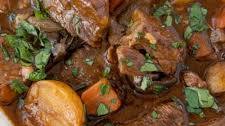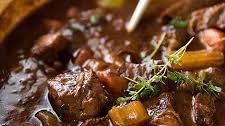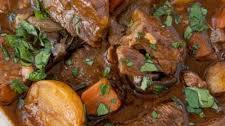The Timeless Appeal of Classic: Embracing Tradition in a Modern World
In a world that is constantly evolving and changing, there is something comforting and reassuring about the classic. Whether it’s a piece of literature, a work of art, or a timeless fashion trend, the classic holds a special place in our hearts.
What makes something classic? It’s the enduring quality that transcends time and trends. Classics are not bound by fleeting fads or temporary popularity; instead, they stand the test of time and continue to resonate with people across generations.
When we think of classic literature, names like Shakespeare, Austen, and Dickens come to mind. These timeless works have captured the imagination of readers for centuries, their themes and characters still relevant in today’s world.
Art also has its classics – from the intricate paintings of the Renaissance masters to the bold strokes of modernist artists. These works inspire awe and admiration, their beauty transcending cultural boundaries and speaking to the universal human experience.
And then there’s classic fashion. The little black dress, a well-tailored suit, a string of pearls – these iconic pieces never go out of style. They exude elegance and sophistication, making a statement without saying a word.
Embracing the classic doesn’t mean living in the past; it means honoring tradition while embracing progress. It’s about finding balance between old and new, appreciating where we come from while looking towards the future.
So whether you’re curling up with a classic novel on a rainy day, admiring an age-old painting in a museum, or donning your favorite timeless outfit for a special occasion, remember that there is beauty and value in embracing the classic in our ever-changing world.
Understanding Classics: Their Significance, Examples, and Timeless Influence
- What makes something a classic?
- Why are classics important in literature?
- What are some examples of classic literature?
- How do classic artworks influence modern art?
- Why do fashion trends come and go, but classics remain timeless?
What makes something a classic?
The enduring allure of a classic lies in its timeless qualities that transcend fleeting trends and resonate with people across generations. Whether it’s a piece of literature, an artwork, or a fashion staple, the essence of a classic is its ability to stand the test of time and continue to captivate audiences with its enduring relevance and universal appeal. A classic is not merely popular in the moment but holds a lasting significance that speaks to the core of human experience, making it a cherished treasure that remains eternally cherished and admired.
Why are classics important in literature?
Classics hold a significant place in literature due to their enduring relevance and timeless appeal. These literary works serve as a window into different eras, cultures, and human experiences, offering valuable insights that transcend time. By studying classics, readers can gain a deeper understanding of universal themes such as love, loss, power, and identity. Additionally, classics often set the foundation for modern literature, influencing contemporary writers and shaping the literary landscape. Through the lens of classics, readers can explore the complexities of the human condition and appreciate the rich tapestry of storytelling that has stood the test of time.
What are some examples of classic literature?
Classic literature encompasses a rich tapestry of timeless works that have left an indelible mark on literary history. Some iconic examples include William Shakespeare’s tragic masterpiece “Romeo and Juliet,” Jane Austen’s beloved novel “Pride and Prejudice,” Charles Dickens’ enduring tale “Great Expectations,” F. Scott Fitzgerald’s poignant exploration of the Jazz Age in “The Great Gatsby,” and Harper Lee’s powerful commentary on race and morality in “To Kill a Mockingbird.” These classics continue to captivate readers with their profound themes, memorable characters, and enduring relevance across generations.
How do classic artworks influence modern art?
Classic artworks serve as the foundation and inspiration for modern art in myriad ways. The timeless beauty, innovative techniques, and profound themes found in classic pieces from various art movements such as the Renaissance, Baroque, and Impressionism continue to influence and shape the artistic landscape of today. Modern artists often draw upon the mastery of composition, use of light and color, and emotive storytelling seen in classic artworks to create their own interpretations that resonate with contemporary audiences. By studying and reinterpreting these classics, modern artists pay homage to the past while infusing their work with a fresh perspective that reflects the ever-evolving nature of artistic expression.
Why do fashion trends come and go, but classics remain timeless?
Fashion trends may come and go like fleeting gusts of wind, but classics stand firm like enduring pillars in the ever-changing landscape of style. The essence of why fashion trends are ephemeral lies in their very nature – they are born out of the zeitgeist, responding to societal shifts and fleeting preferences. On the other hand, classics possess a timeless allure because they transcend the confines of trend cycles. Rooted in tradition and crafted with meticulous attention to detail, classic pieces exude a sense of sophistication and elegance that resonates across generations. Their enduring appeal lies in their ability to capture universal aesthetics and evoke a sense of timelessness that transcends passing fads.









